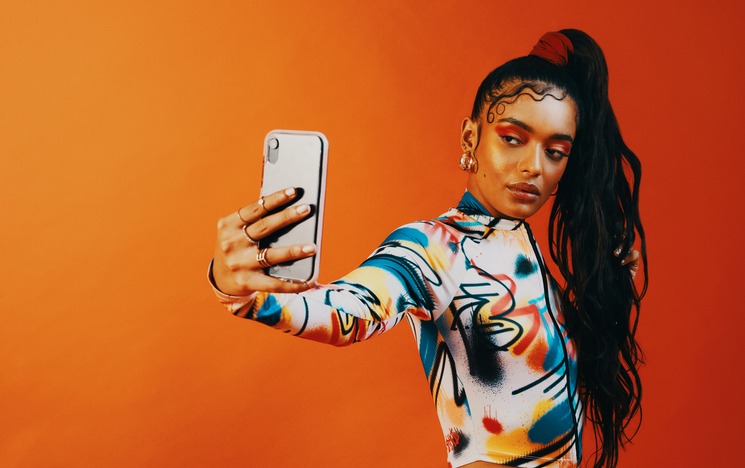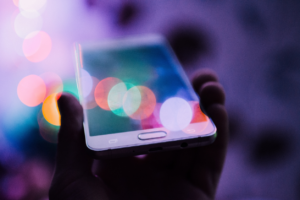Why influencer content creation is a partnership, not a sponsorship
The seismic shift back to authenticity will force some brands to sink or swim.

“The bubble is going to burst.”
That’s what we all kept hearing in the influencer marketing space in BC (before COVID). And then, the world changed for the worse. But for the tiny corner of the internet where influencers rule, one good thing came out of the monstrous shift in our way of life. And that is a shift back to authenticity. If you didn’t adapt, you got called out. You either thought long and hard about change, or you got #cancelled.
For years, influencer marketing has become highly transactional. It’s focused on what the ROI is for brands versus how the influencer connects with their communities. At imre, we bring back the power of human influence and orchestrate how that influence is used to reach real people. Ultimately, we orchestrate human connections, not brand campaigns. And that’s what I want to double click on a bit more: partnership not sponsorship.
Let’s think back to about 10 years ago when influencer marketing blew up to become the behemoth that it is today. All of a sudden, there were these genius people popping up on blogs and Twitter who figured out how to turn their special skill sets and hobbies into profitable personal brands. For the marketers who were quick to believe in this power, we used a white glove approach—every influencer got a personalized briefing call and we allowed them to run their content as they saw fit.
[RELATED: Read more about imre.]
Then we got greedy. We wanted more, faster. So came the rise of micro influencers who were cheaper to work with and thus, we wanted to work with them all. Tools started popping up to make us more “efficient” and gone were the days of personalized phone calls but rather, we blasted briefs to dozens of people at the same time.
And guess what—their content came back looking identical. It was a sea of sameness; influencers who all looked alike, trying to sell you a product that they likely didn’t believe in, but promoted nonetheless.
So, can we all hold hands (wearing gloves and six feet apart) and agree to put an end to this? Cynical consumers are putting their guards up when they see #sponsored. And I get it. But whatever happened to #partnership?
#Partnership Pointers (aka how to treat influencers like humans and in turn, get other humans to trust them):
- Do your research. You need to understand your brand’s audience before attempting to craft a campaign. It’s not just about demographics but those nuanced psychographics that turn your “consumers” into real people who happen to have purchase power in your category.
- Pay attention to culture. These people with purchasing power don’t only care about products. They’re interested in the arts, in sports, in politics and so much more. Figure out what excites them, scares them, makes them laugh. And use specifics rather than generalized ideas.
- Pick a partner. Only now can you actually dig into the individuals who will tell these stories for your brand. And don’t forget, an influencer isn’t just a YouTuber. They can be a company employee, a patient, an author, or yes, a TikTok star.
- Craft the story you think you want. Go ahead, make a brief. But keep it short and sweet. Include the necessary information and nothing extra. It’s like when you’re looking for a new job, have you ever seen a good resume that’s longer than a page? No. So don’t make your brief longer than needed either.
- Let influencers edit it. You chose them for a reason. Likely it’s because they create beautiful content that resonates with their audience. Let them work their magic for your brand. Don’t edit to the point of 2017 influencer marketing where every post sounds the same.
- Pay attention. There’s so much more that can happen after they post their Instagram video. Read. The. Comments. What if there’s a consumer insight from their followers that inspires you to create a whole new product? If someone shares their own poignant story, wouldn’t you want to send them a little something? Maybe when someone DMs the influencer with a photo, you can ask for rights to post on your social channel, too. And the right influencer partner is going to be paying attention as well, answering questions and engaging with their followers. That’s when you really start to see their value!
To summarize, within this model of orchestrating partnerships, it’s all about shared values. Pairing the goals of the brand with their audience (both psychographics and demographics), is figuring out what’s going on culturally and then finding that perfect person to share the message. These shared values won’t simply be pushed out but rather, we want to pull people into our brand’s circle of influence and go on the journey with them.
Let’s say it again, people: partnerships not sponsorships in 2021.
This article is in partnership with imre.
Masha Snitkovsky is senior director, digital influence at imre.






